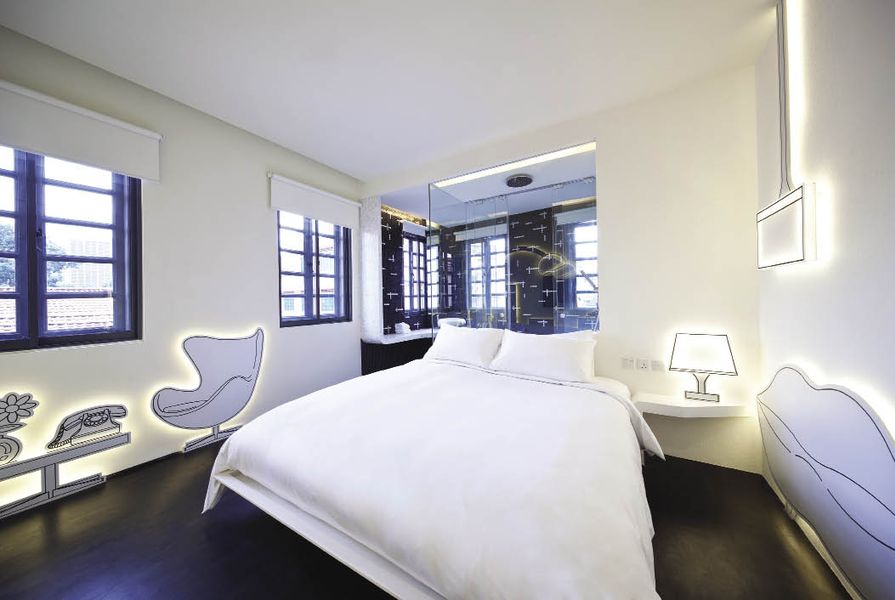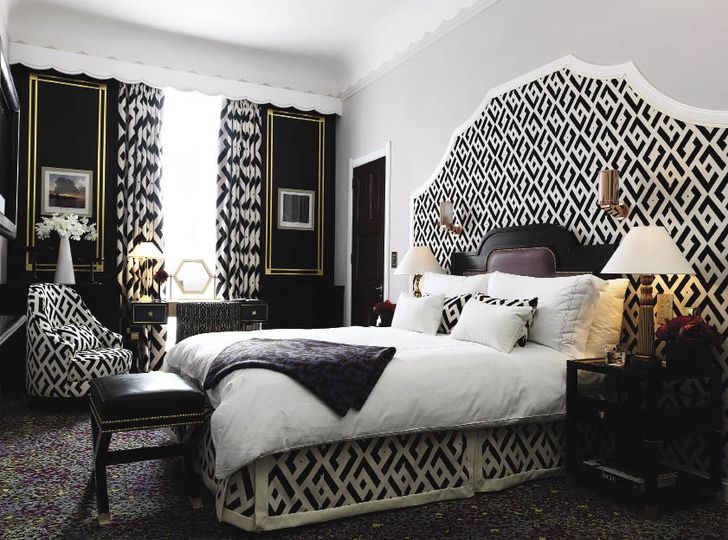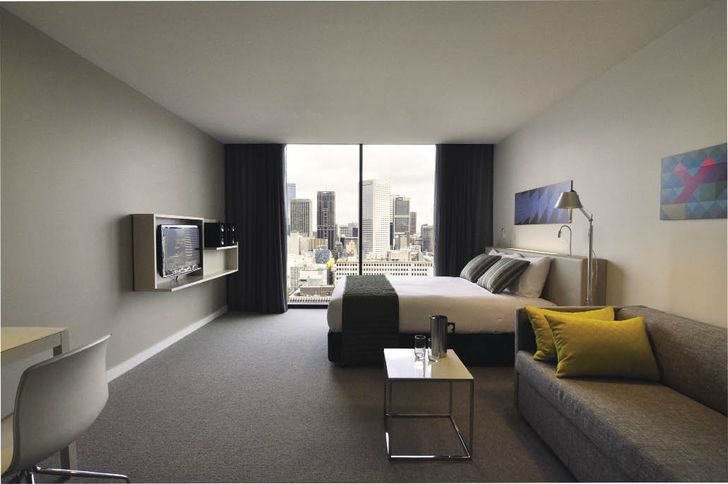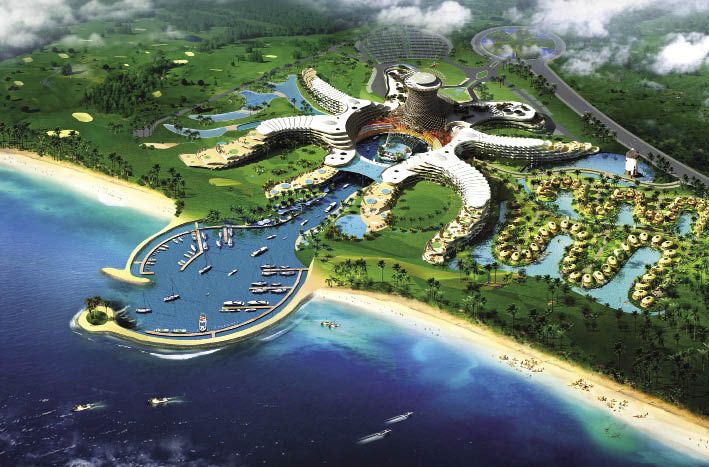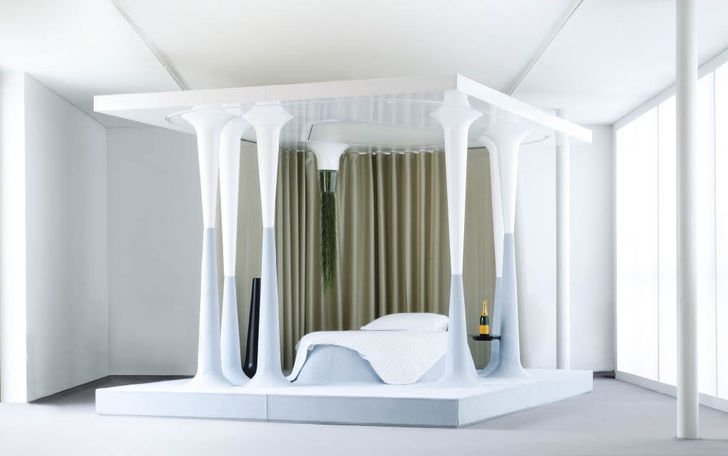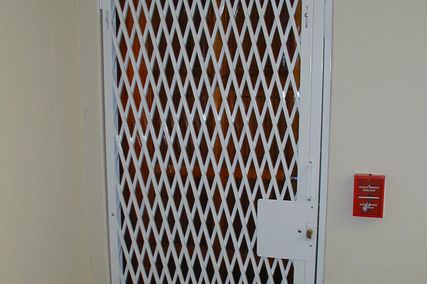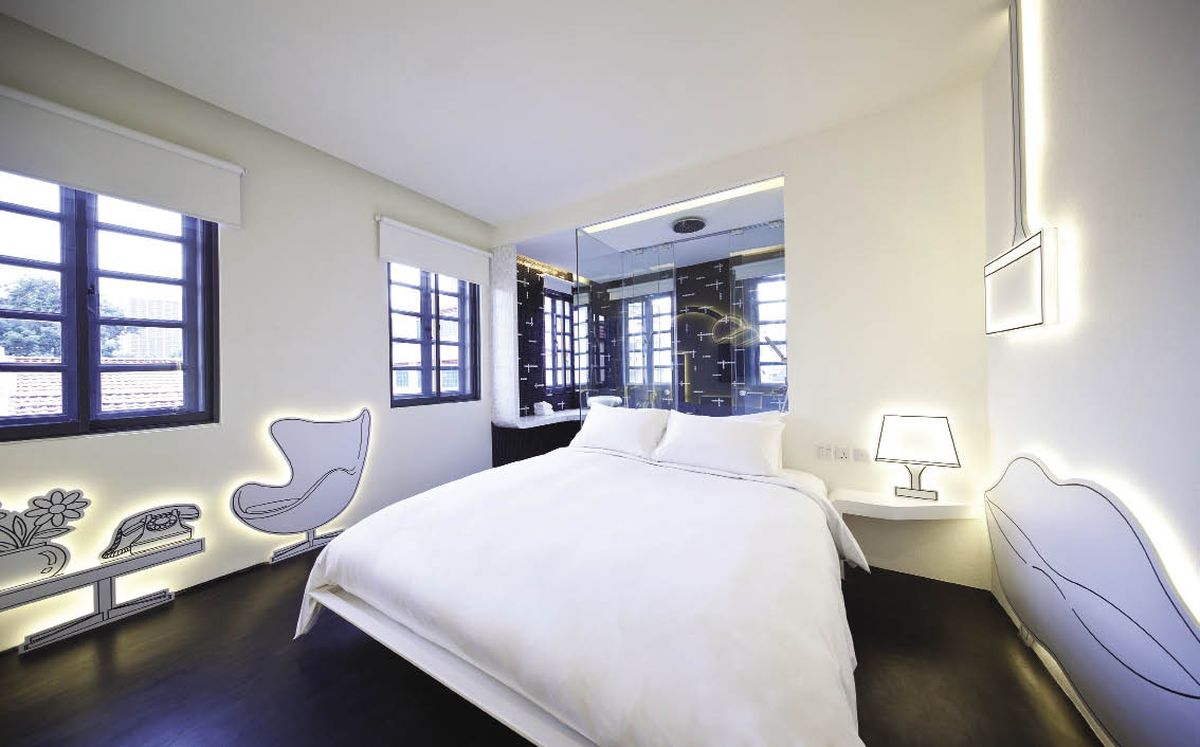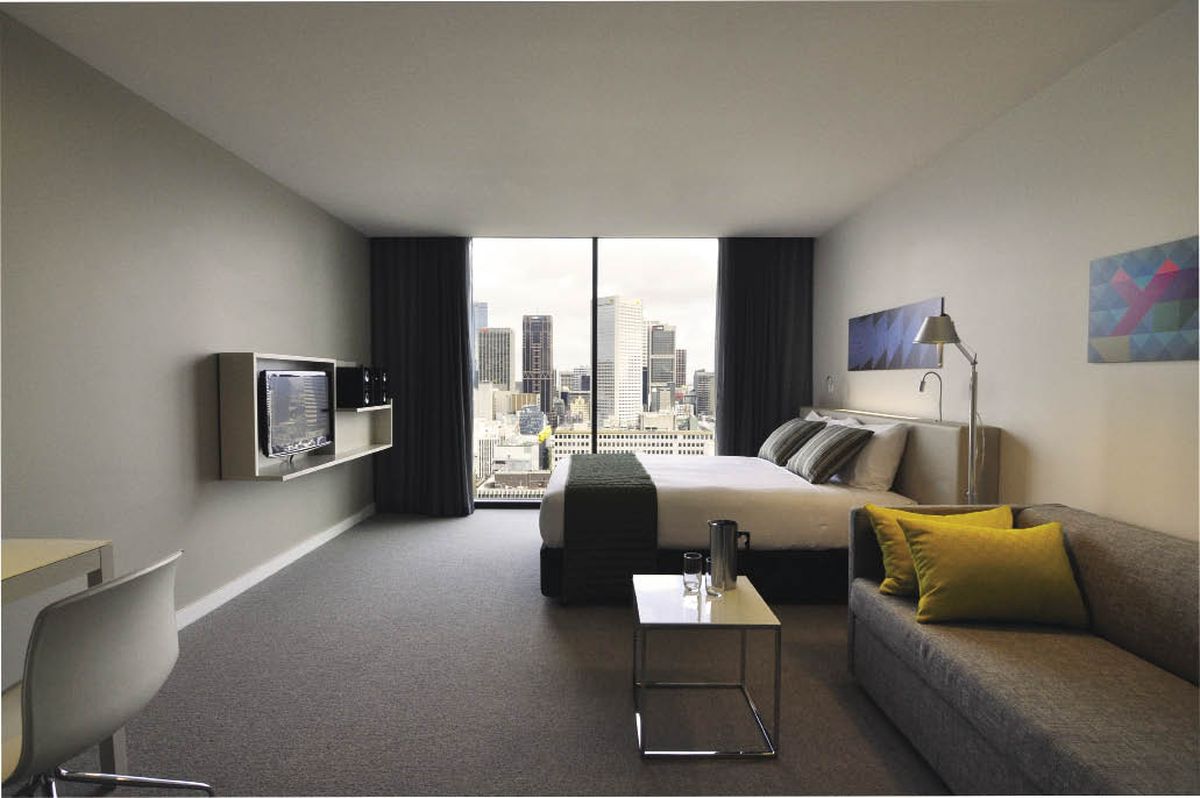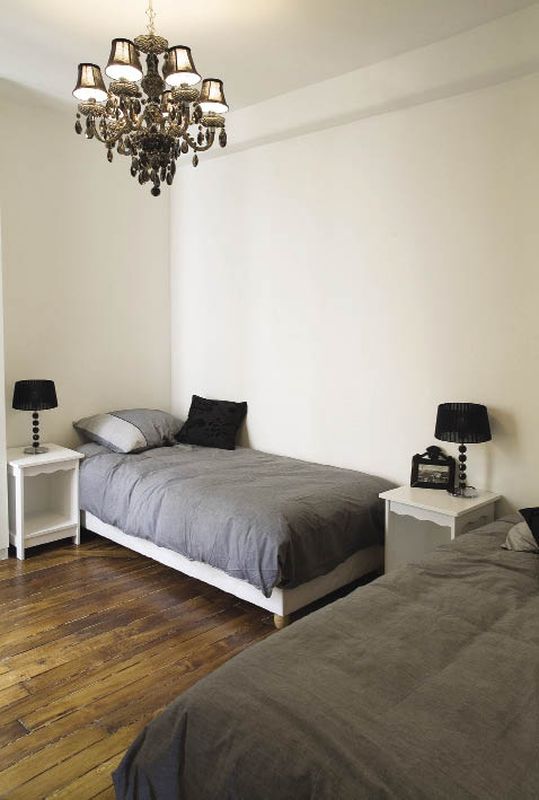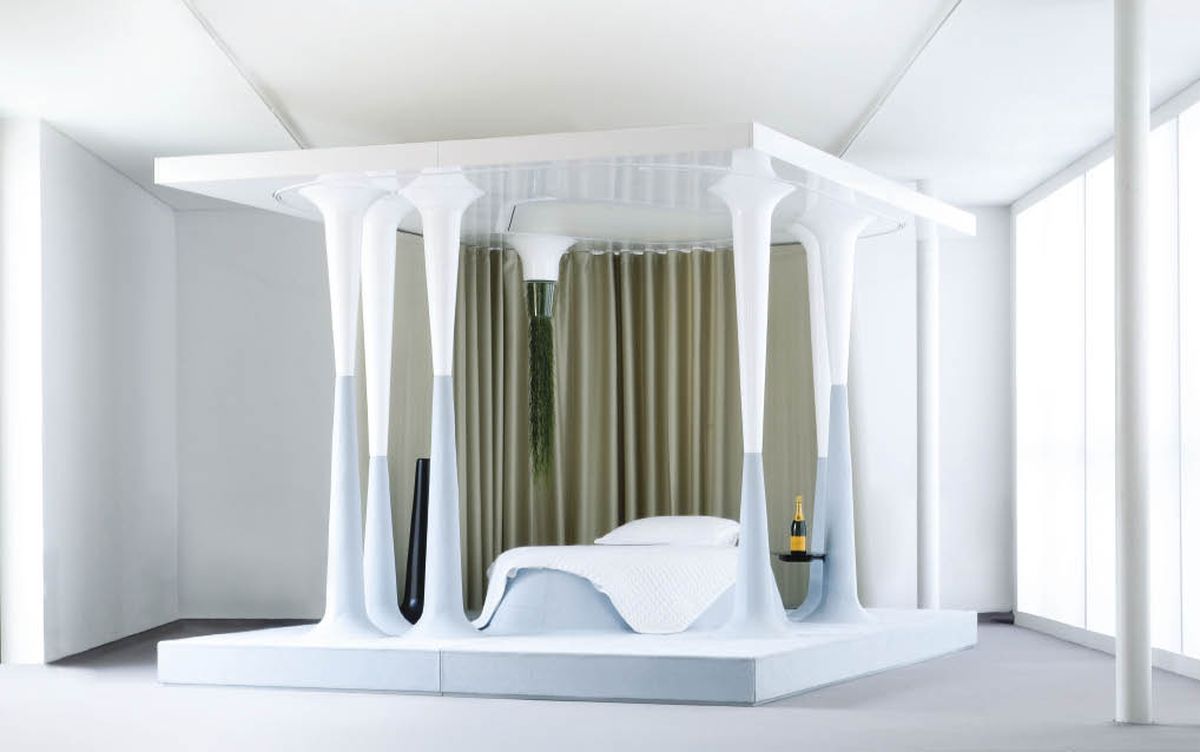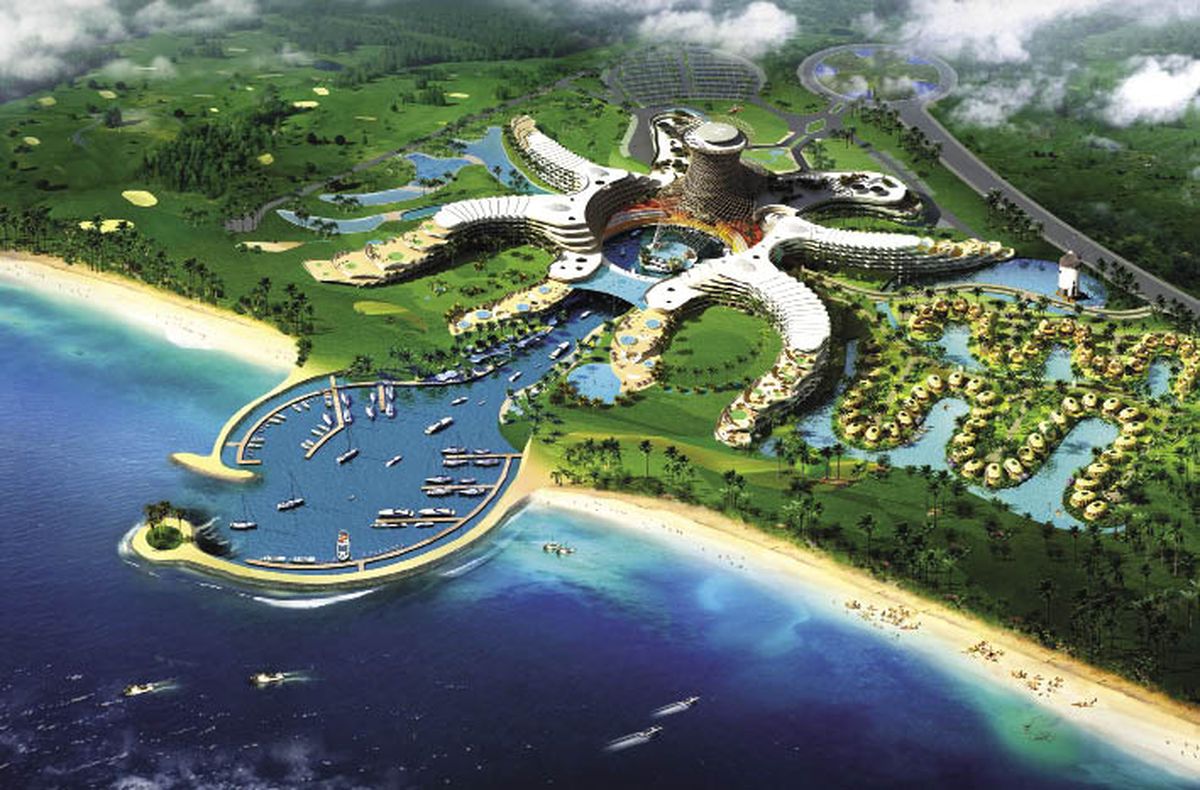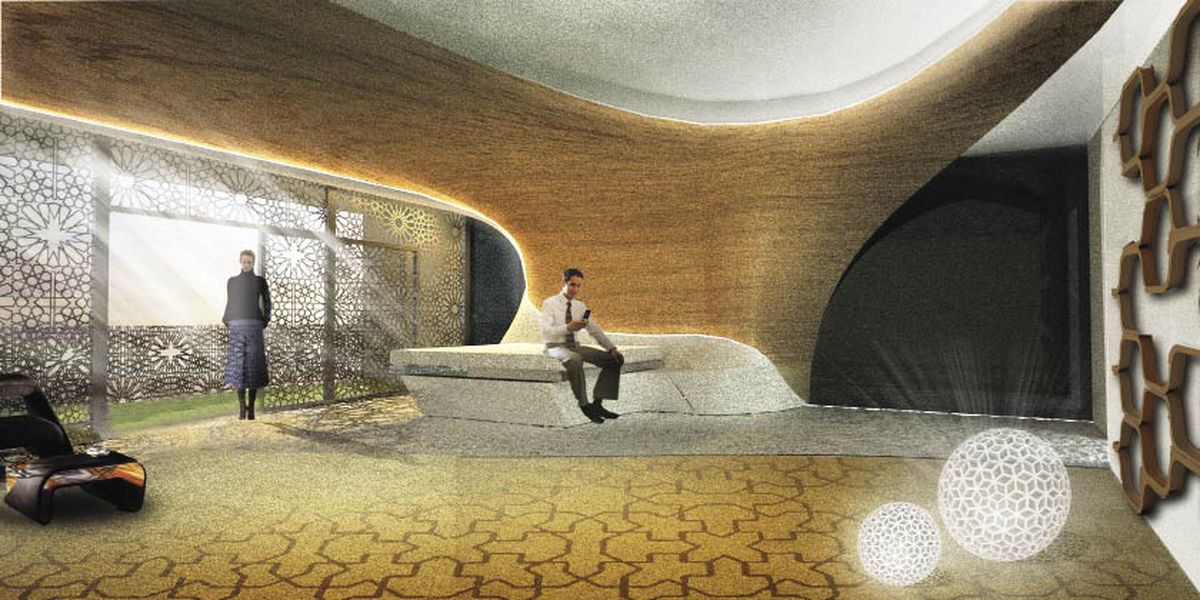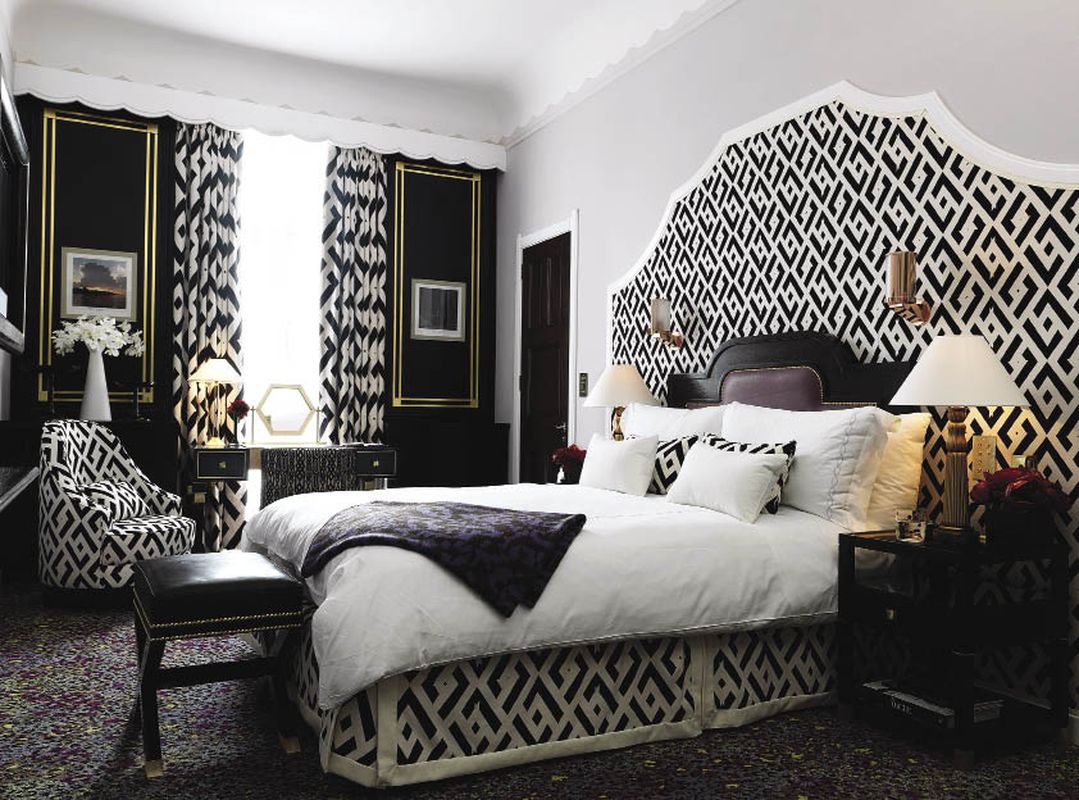The first “design hotel” was the uber-cool Royalton in New York, which was opened in 1988 by Ian Schrager with interiors by Philippe Starck. Similar to the concept of the boutique hotel – which provided an alternative to cookie-cutter big hotel chains – the design hotel traded on the look of the hotel to attract guests, providing a sense that each hotel was unique – a design experience in its own right. This new wave of hotels was part of the “experience economy,” with the interiors becoming platforms for staged experiences – at the Royalton, the lobby featured a blue carpeted strip which acted as a runway, viewed from the sunken seating areas adjacent. With a more private atmosphere and personalized service, the lobby became a buzzing hub for “lobby socializing,” with celebrities frequently spotted – indeed the Royalton made Starck himself into a design popstar. With the flourishing of the design hotel through the 1990s and 2000s, the category has become a lot wider. Now, design hotels need not be small – some are very large, with up to five hundred rooms – and they need not be in the top price bracket – many more design hotels are available at lower prices.
With the opening out of the category and the drive to stand out from the crowd becoming more and more pronounced, many design hotels have developed unusual themes and quirky design ideas – some are downright outlandish. Now we have ice hotels, treehouse hotels, underwater hotels and even space station hotels – though some of these should be called gimmick hotels, not design hotels.
Responding to this explosion of a new type, in 1993 Claus Sendlinger started a company called Design Hotels. Each member has its own story, with the creative brains behind the hotel (whether owner or designer) providing vision through cutting-edge design, new experiences and different ways of thinking. With now over 190 hotels as part of the group, Sendlinger has his own criteria for what makes a design hotel. “Generally we look at the people behind the project and whether or not their ideas and visions fit with ours,” explains Sendlinger. “It’s not just the design that makes a property a good match for the Design Hotels brand; the hotel also needs to show it has the right personality. Architecture, design, service, gastronomy and lots of intangible qualities must come together like pieces of a puzzle to create a coherent picture.”
Rooms at Diane von Furstenberg for Claridges feature the fashion designer’s bold prints.
Recent additions to the Design Hotels family include the Wanderlust hotel in Singapore, with design interiors by four cutting-edge Singapore design studios: Asylum has created the Lobby Level called “Industrial Glam”; :phunk Studio’s Level 2 is a series of vibrant colours; DP Architects has called Level 3 “Is it just Black and White”; and fFurious presents friendly monsters in fantasy-filled rooms. Other new members include Alila in Luang Prabang, Alila Bangalore and Casa de la Flora in Khao Lak, Thailand, all of which will be opening in Asia by the end of the year. Participating in the development of hotels as well as simply collecting suitable members, Design Hotels held a Future Forum earlier this year in Berlin (turn to pages 62–63 for more details).
The only Australian member of Design Hotels is the Limes Hotel, designed by Alexander Lotersztain of Derlot, featuring a distinctive facade with cut-out blob shapes, in Brisbane’s Fortitude Valley. Limes is also part of a new boutique group of hotels called Eight Hotels, which also includes the Diamont Hotels in Sydney and Canberra as well as other Sydney and Melbourne hotels. Most recently, Eight Hotels has launched Paris8 – a group of six apartments available for rent in Paris.
Another group of hotels in Australia that has emerged is the Art Series Hotels group. Named after key Australian artists and featuring their work in the rooms, the group has had three recent openings in Melbourne – the first was Prahran’s Cullen Hotel, followed by the Olsen Hotel in South Yarra and the Blackman Hotel on St Kilda Road.
Australian art may be one thing, but it is the beauty of nature that has long been the drawcard of Australian holidays. The tradition of the Australian retreat in the bush, rainforest or by the ocean continues. In the following pages we review two new hotels – Saffire Freycinet, enjoying both coastline and mountains in Tasmania (pages 50–51), and Sangoma Retreat in the Bowen Mountains of New South Wales, which provides an intimate boutique experience complete with home-cooked meals (pages 58–59). In the city, apartment hotels have become more popular. The Citadines Melbourne on Bourke is a new hotel designed by a team including Woods Bagot and Multiplex. Citadines Apart’hotels exist all through Europe and Asia, and the concept is “stay your way” – with flexible options including fold-away doors, TVs on pivots and spaces suitable for drinks, meetings or a yoga session. SJB is also refurbishing the Medina on Crown in Sydney, which will be rebranded as an Adina Apartment Hotel. Offering “more than just a hotel,” these apartments are designed to be a home away from home. Existing Adina Apartment Hotels are in Berlin, Frankfurt, Budapest and Copenhagen.
The Boutique Citadines Serviced Apartments on Bourke Street, Melbourne, have flexible rooms.
The partnership between Crown and Bates Smart continues, following up the Crown Towers, City of Dreams in Macau and the Crown Metropol, (featured in issue 32 of Artichoke), the new Mahogany Room at Crown Towers will be expanded by almost 50 percent, including a new facade facing Melbourne’s CBD and Yarra River, opening at the end of 2011.
The large hotels in Sydney are also undergoing change, with a major refurbishment planned for the Park Hyatt at the Rocks in Sydney, courtesy of Bar Studio. And the Shangri-La, also in Sydney, has a few new additions designed by Hassell – the Chi Spa takes its inspiration from the legend of the Shangri-La and also from the Chinese concept of chi, the gym and pool were upgraded, the Blu Bar and all-day dining venue Cafe Mix were redesigned and a new outdoor dining area was created adjacent to the lobby.
Hotels by designers, yes, but are these design hotels? To answer, we must look at the characteristics of a design hotel. Whether large or small, luxury, budget or anywhere in between, a design hotel must be individual. If you could mistake it for any other room with a bed and four walls, you are not in a design hotel. That’s not to say that hotels with themes are all design hotels – for example, a new hotel in Paris called Seven Rooms has a James Bond room and an Alice in Wonderland room, but does it work? Is it aesthetically pleasing? And does it provide a good experience for guests? I remember staying in a “design hotel” in Amsterdam which had been converted from an orphanage and then a backpackers and despite, some outlandish lobby furniture and everything in the rooms being white, it was cold. And when we asked for the heating to be turned up we were told it wasn’t possible and were given more blankets. It was design but it wasn’t designed.
Concept hotels have abounded in recent years – one recent example is the Treehotel in the boreal forest in Sweden. Inspired by documentary film Trädälskaren (“Treelover”) by Jonas Selberg Augustsén, the Treehotel includes rooms by various architects and designers with names like “The Bird’s Nest”, “The UFO” and perhaps most striking “The Mirrorcube” by Tham ? Videgård Arkitekter, which is literally a cube-shaped room mounted around a tree trunk with mirrors on the outside to reflect the forests that surround it. Other hotels make their mark not through quirkiness or themes but through associating with fashion brands or celebrity – one of the first was the Palazzo Versace which opened in the Gold Coast in 2000. Other fashion brands have followed suit, not only from the luxury brand category, but also other brands such as Camper. The Spanish shoe brand now has two hotels called Casa Camper in Barcelona and Berlin, with a new one set to open in New York. Another successful fashion-themed hotel is the recent Diane von Furstenberg for Claridges hotel in New York which includes bespoke fabrics and furniture using her bold collection of prints.
Australia has been slow to take up the concept hotel, although a recent venture by Tourism Victoria and Right Angle Studio called the Lost & Found Hotel Room made use of a temporary space by setting up a free hotel room which stocked furniture, homewares, music, books and beauty products by local Australian creatives (for more information see Artichoke 33, pages 52–53)
Render of the Octopus hotel in China by PTW.
Australian firm PTW is working on the Octopus Hotel, which takes the form of an octopus (tentacles) and has a centre tower that is the shape of a traditional Chinese fishing basket. A luxury resort, the Octopus Hotel will open in Hainan in southern China in 2013. Also working on projects overseas, Australia- and Germany-based LAVA is working on some new hotel concepts, including a new resort and theme park in Mexico and a hotel is part of their plan for Masdar city’s plaza. Masdar is the new planned zero-emissions city which is going ahead in the Middle East. Called “Oasis of the Future,” the plaza is built around the central tenet of environmental sustain-ability and also includes a hotel and convention centre.
Once Upon A Dream capsule by Mathieu Lehanneur shown at Andaz Liverpool Street.
These new hotels by LAVA are putting into practice the research learnt from the practice’s Future Hotel Room from 2008, a research project that looked at new technologies to be included in hotel rooms, such as anti-jetlag lighting, active comfort beds and semi-automated production techniques designed to respond to users’ actual needs. Taking research into jetlag and insomnia one step further is an installation for the London Design Festival 2010 called Once Upon a Dream by French designer Mathieu Lehanneur on display at the new hotel Andaz Liverpool Street lounge (lobby). Based on research by Professor Alain Nicolas into the influence of sleep on cognitive functions, Once Upon a Dream gives the user absolute control of his or her environment. Over a fifteen-minute period, a curtain slowly draws around the bed, the temperature slowly moves toward nineteen degrees for maximum comfort, the light slowly extinguishes and there is white noise to prevent any aural distractions. Once the user goes to sleep, a puff of sea air is released into the room at regular intervals, anti-oxidizing and hydrating, as well as rich in minerals to benefit the sleeper’s cellular metabolism.
This sort of research is vital in the development of hotels. Because remember: at the end of the day, it doesn’t matter if it’s a design hotel if it hasn’t been designed.
Source
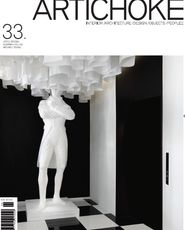
Discussion
Published online: 1 Dec 2010
Words:
Penny Craswell
Images:
Courtesy Tham & Videgård Arkitekter.,
Courtesy of Design Hotels.
Issue
Artichoke, December 2010

